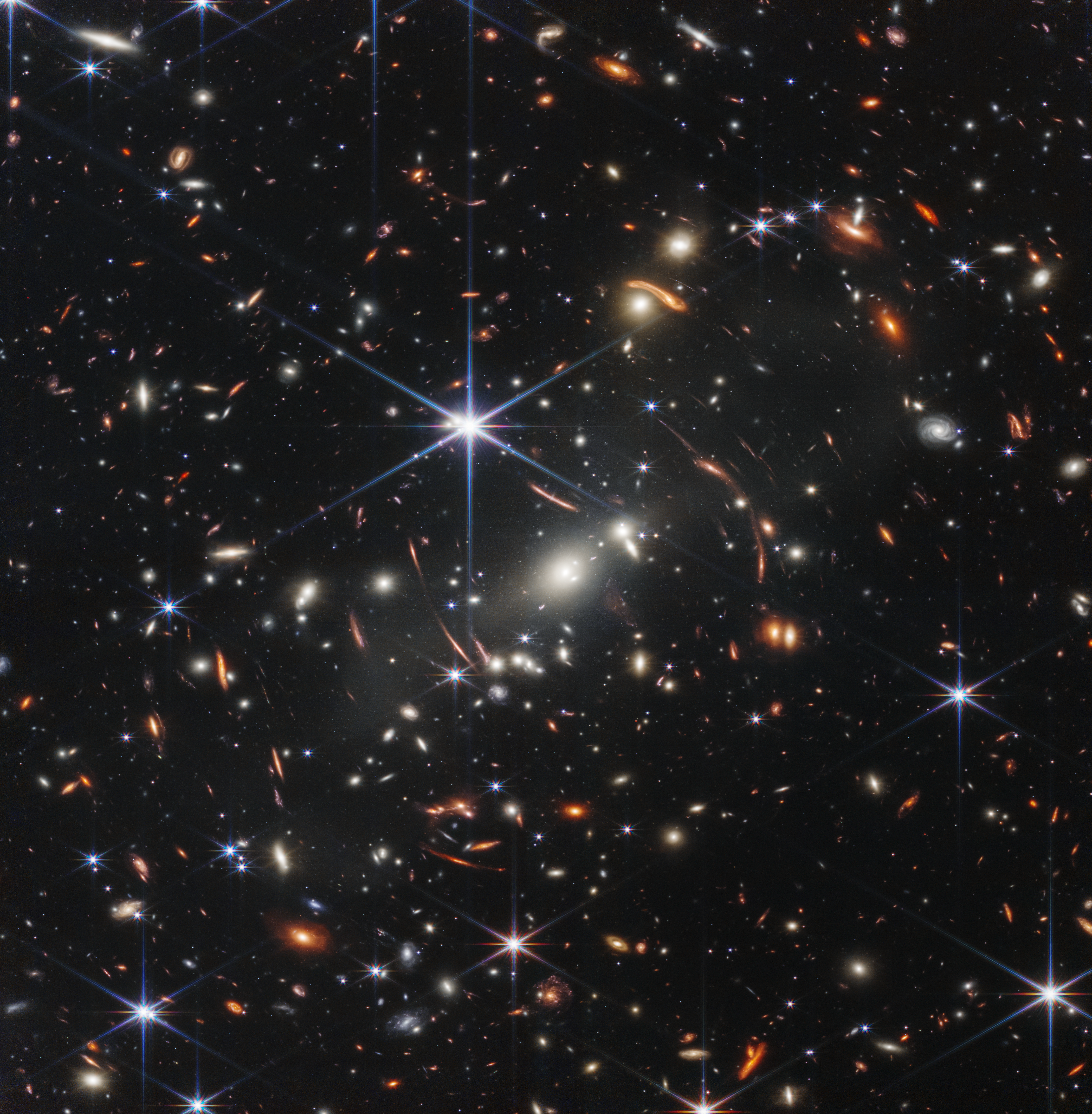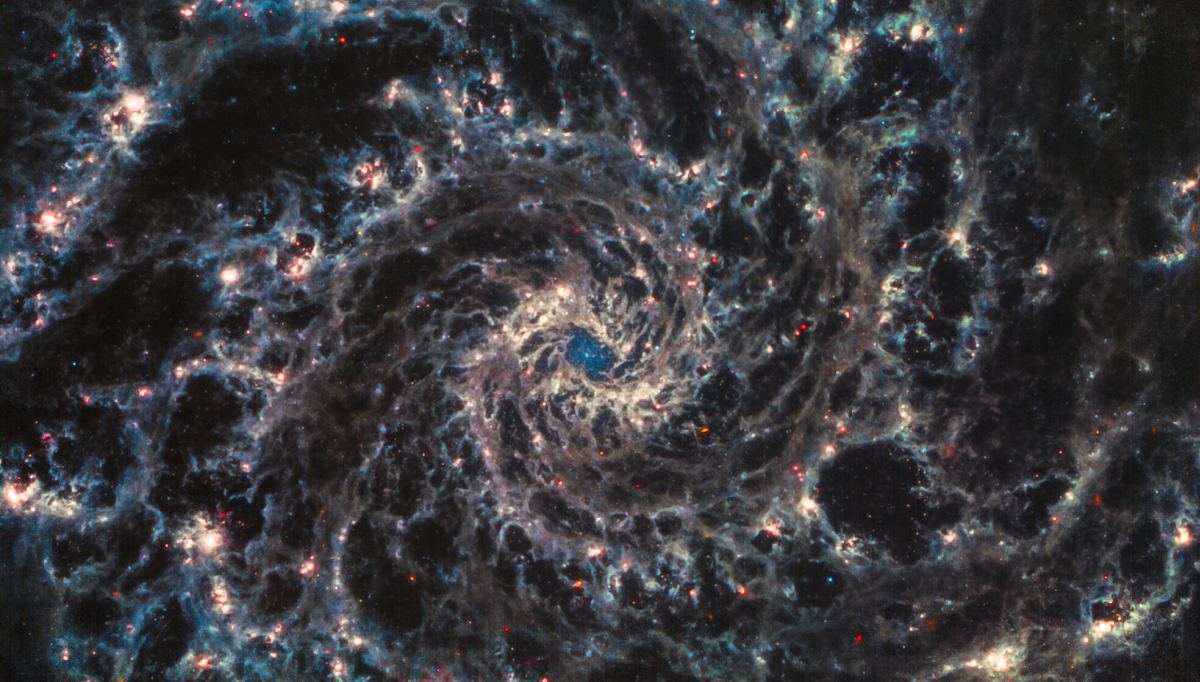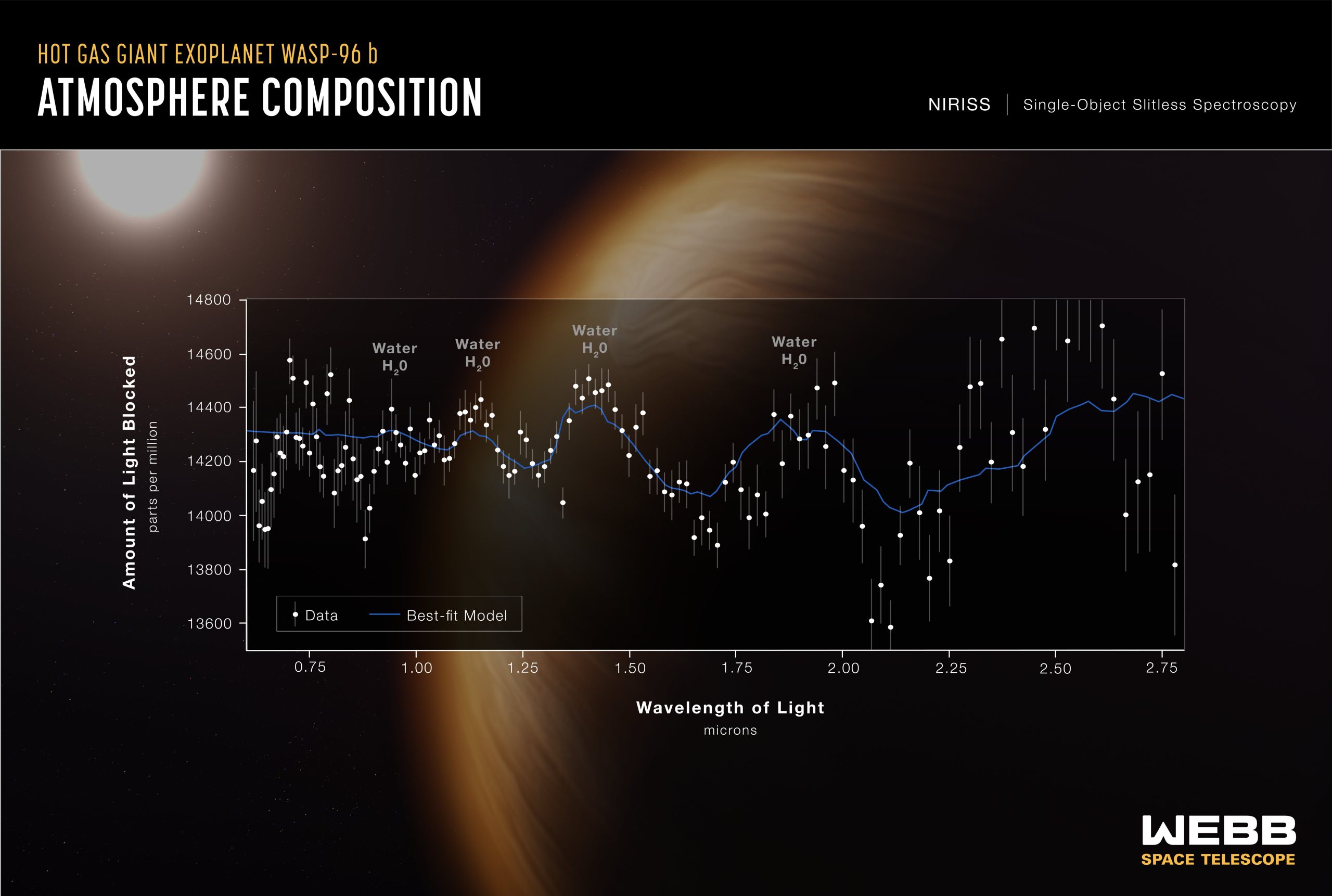James Webb Space Telescope: a new era
2022 August 7

More than 25 years and $10 billion in the making, the release of the first images from the James Webb Space Telescope (JWST) have certainly lived up to the hype. The five images were carefully curated to show the full breadth of JWST’s observing capability across its four on-board instruments – giving a taste of what is to come as we enter a new era of astronomy.
JWST observes across the infrared (IR) range, a part of the electromagnetic spectrum which probes the Universe much more deeply than visible light, allowing usually unseen structures to be observed and examined in unprecedented resolution. As I write, a new compound image of M74 from JWST data is starting to do the rounds online – an intricate, lacy spiral, reminiscent of a Mandelbrot set. Viewing it alongside Hubble’s well-known image of the same target, rendered in infrared it is unrecognizable. No longer soft, but strikingly dramatic – we can see the IR light radiated out by the dust itself rather than the shadows of visible light absorbed by gas and dust. Looking at JWST images after those of Hubble or Spitzer feels like putting glasses on for the first time, and being able to see detail you hadn’t even imagined was there.

Nowhere is this new detail more striking than in the first of the images, the remarkable deep field (shown at top). The image unveils the distant Universe, showing a galaxy cluster 4.6b ly from Earth with clear gravitational lensing. In high contrast, we can see the image is crowded with hundreds of galaxies, and all in a patch of sky the same size as a grain of sand held out at arm’s length. These glimpses into the distant past allow the chemical composition of the earliest galaxies to be analysed, slowly filling the holes in our knowledge of early-Universe formation.
Amongst the images, there’s a transmission spectrum of an exoplanet 1,000ly away. Less beautiful, perhaps, but no less thrilling, as this represents an incredible new dawn in exoplanet discovery. This could be aided by a global community of amateur astronomers, who can provide the transit timing accuracy necessary for telescopes like JWST to organise observations as efficiently as possible – a crucial task with so many potential targets. For amateur astronomers keen to get involved, but who lack the clear skies or telescopes for practical observations, the JWST data is available for anyone to download and (with a little Python experience) attempt their own data analysis.

By the time this arrives at your doorstep the first images will be old news, and every subsequent release publicized a little more quietly. But even in this new age of astronomy, where previously unthinkable observations become the norm, I cannot for a second imagine they will ever lose their impact.
Katie Sawers is a science writer and associate editor at IOP Publishing.
https://britastro.org/wp-content/uploads/2022/08/carina_21cm.tif
| The British Astronomical Association supports amateur astronomers around the UK and the rest of the world. Find out more about the BAA or join us. |
